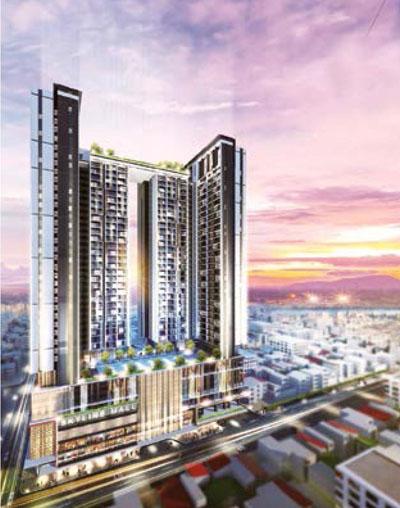How China is Shaping Cambodia’s Skyline
2019-06-11EuanBlack
Euan Black

Rapid economic growth continues to open up new opportunities for a booming construction industry riding high on Chinese investment.
Green safety nets are draped across Phnom Penhs half-built skyscrapers like national flags on the shoulders of Olympic athletes. Peppering the capitals ever-evolving skyline, the billowing emerald symbols of urbanisation and economic development are inescapable reminders of a booming construction industry that shows no signs of slowing.
In fact, many believe the construction sector could soon become Cambodias most important economic pillar, as growth in the countrys garment industry begins to slow.
“How I see it today is like how I saw it a few years ago,” said Jerome Luciani-Khao, deputy general manager of LBL, a French- Cambodian construction firm that has operated in Cambodia since 1991. “It was booming then and, from my point of view, its not changed at all. It will continue to grow.”
Ross Wheble, real estate consultancy Knight Franks country manager for Cambodia, painted an equally positive picture for the year ahead.
“The last general election (in 2013) had a noticeable impact on the real estate market. However, this year has already started with a flurry and demand across all sectors appears to be increasing unabated,” he said, before explaining why the industry is likely to experience a welcome fall in rental prices.
“We dont expect any capital appreciation within the high-end segment over the short-term as Cambodians cannot afford to buy these properties. It might be another five years until salary levels in Phnom Penh increase enough for there to be domestic demand for high-end condos,” he said. “The majority of buyers of condos have been foreign investors who will rent out the units, which will place downward pressure on rental prices — which is a good thing as currently the rental rates are inflated compared with disposable incomes in Phnom Penh.”
Underpinning the positive market outlook is a recent influx of Chinese investment that Chanco said helped to rejuvenate a market “that was starting to show signs of major weakness two to three years ago, when significant price declines were being reported out of Phnom Penhs residential space”.
One of the most prominent real estate developers catering to the Chinese market is the Prince Real Estate Group, a company with a Phnom Penh showroom that shares space with the chamber of commerce for the Chinese province of Fujian.
According to the groups marketing director Tianlun Hu, half of the condo buyers are Chinese, Tianlun said, while the other half are a mixture of Cambodians and other international investors, and between 60% and 70% of purchases are made for investment purposes.
Outside Phnom Penh, the group is pumping US$ 1 billion into two major projects in Sihanoukville, a coastal city that typifies the far-reaching impact of Chinese investment on Cambodias economy.
With its cheap beer and even cheaper thrills, the southwestern city has long attracted Western backpackers in search of some fun in the sun. But a wave of Chinese investors, encouraged by the citys governor Yun Min, are transforming the Western tourist hub into what the vice-president of the citys chamber of commerce has described as a “Chinatown” built on casinos, hotels and luxury resorts. In lieu of official figures, estimates of the size of the Chinese population in the city of 250,000 run from the thousands to the tens of thousands.
Proponents of the recent influx of Chinese investment in Sihanoukville say it has created jobs for local communities and contributed towards improving the skills and standards of the local workforce. Others argue that it has also led to the evictions of numerous local businesses at the hands of landlords keen to capitalise on rapidly rising land prices.
In the eyes of Kean Kim Leang, the founder of Cambodian development firm Urban Living Solutions, the positives of increased Chinese business activity in Sihanoukville outweigh the negatives.
“Any form of foreign direct investment is good for the local economy. Infrastructure will be improved, Sihanoukville will be exposed to the Chinese tourist market and jobs will be created for locals,” said Leang. “The major winners will be local land owners and local contractors that are working on those developments.”
Luciani-Khao, however, remains confident that Cambodias rapidly growing economy will continue to provide more than enough work for his company to thrive in the face of increased competition. Whats more, he added, the arrival of international brands willing to pay a premium for projects that meet international standards means that opportunities within industrial and retail spaces abound.
“Before, it was really difficult to be competitive in the industrial space because other companies could do it easily as clients didnt used to demand international standards,” he said. “But now the clients are big brands, big international groups — and they are expecting on-site safety, high-quality finishing, good project management. They want to do a nice canteen for their staff. They want their staff to be proud of the company. It was not the case before.”
